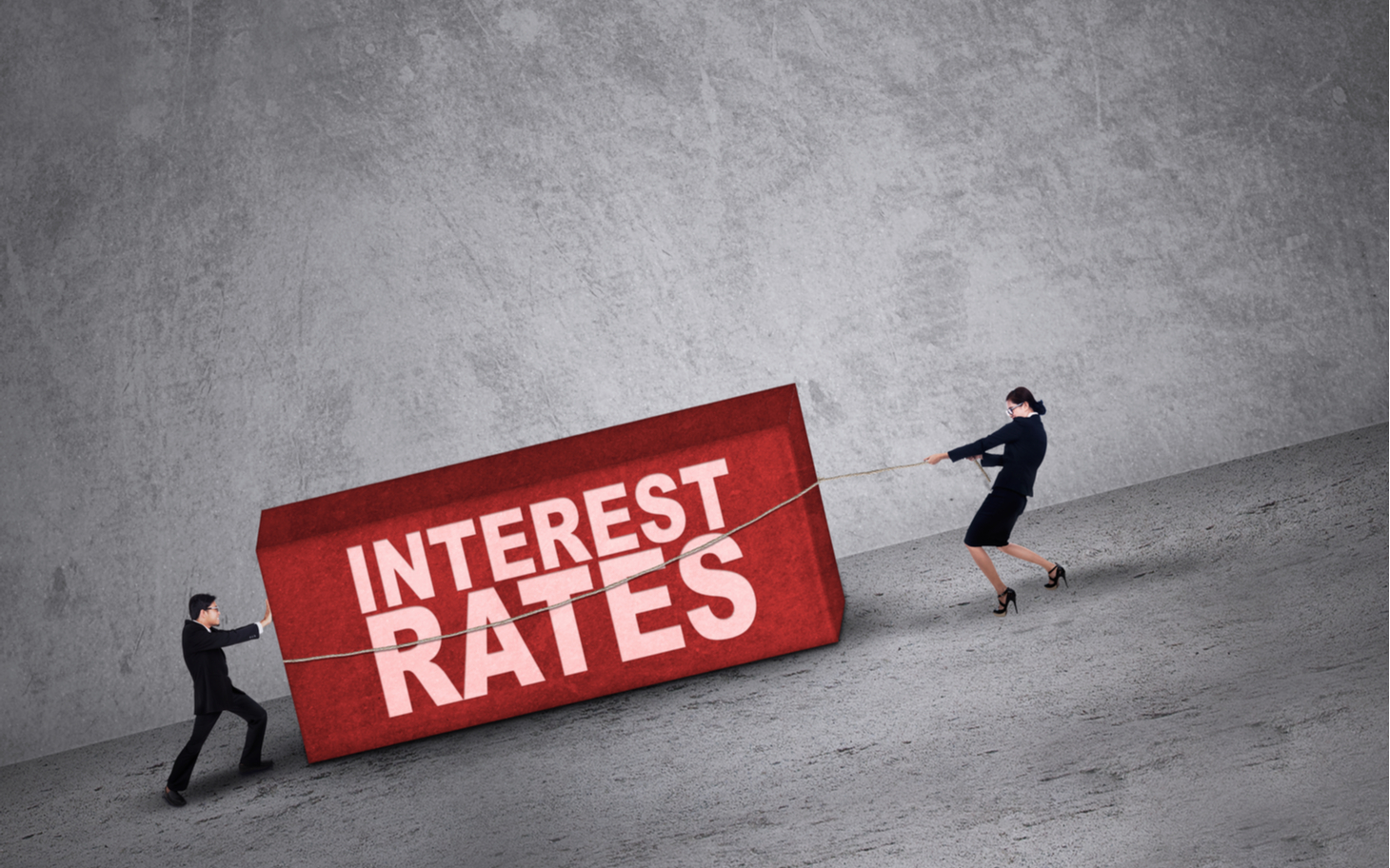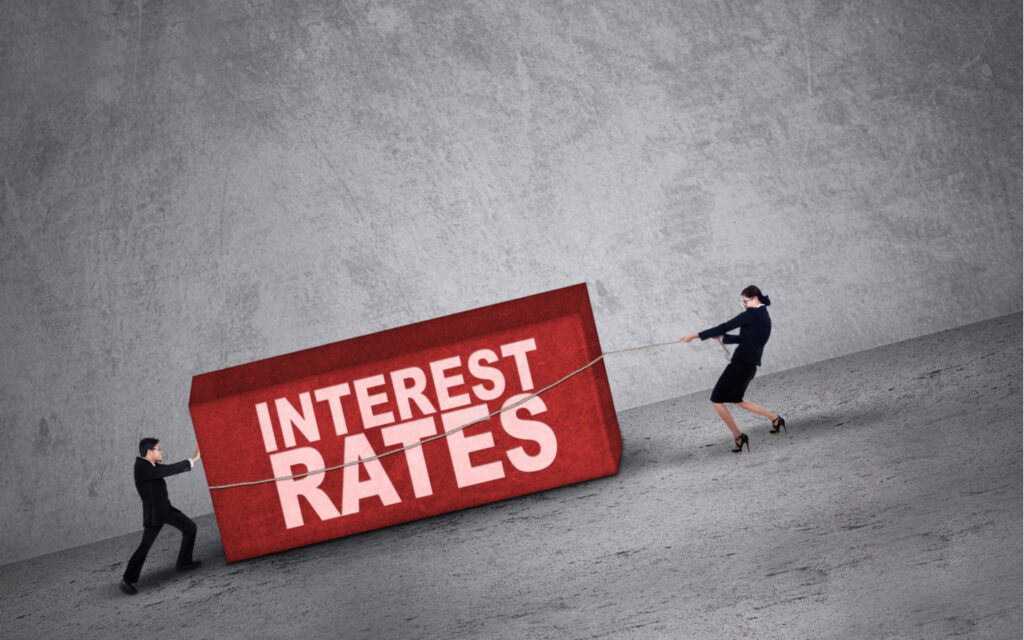
The price of failure is measured in interest rates: Investors must ask themselves two questions whenever interest rates begin to rise. Who can afford the rising borrowing rates the least, and when do they run into trouble?
Every time interest rates have risen since the 1970s, we’ve seen a variety of borrowers fall into problems. Asian countries, US banks, mortgage debtors in the US, European governments, US technology stocks, and so on.
And each time, the amount at which interest rates had to climb in order to cause the crisis was slightly lower than the previous time. And each time, interest rates have to fall even lower in order to reengineer the next boom.
So, who is it going to be this time? Who will cause another squabble when their interest bill becomes too high?
First and foremost, let us confirm that interest rates are rising. And how much?
The Bank of England (BoE), which just hiked rates to 0.5 per cent, is now expected to boost rates to 1% by May. That may appear insignificant, but consider that it is double the present rate, four times the most recent rate, and ten times the rate that existed prior to that…
Do you believe borrowers can afford to have their interest cost double or quadruple?
Bloomberg had some further thoughts on the BoE’s decision. To begin with, “the rise is the first back-to-back hike since 2004.” In other words, the speed is unusually rapid. But it was nearly as fast:
Policymakers were on the verge of delivering a 50-basis-point hike, with four of the nine-member committee voting for an increase that would have been unprecedented since the UK central bank achieved independence from the government in 1997.
Another aspect of the announcement worth noting is:
The action increased the benchmark lending rate from 0.25 per cent to 0.5 per cent, ushering in a new era in which the BOE would begin to unwind 895 billion pounds ($1.2 trillion) of bond assets built over the previous decade to support the economy.
This complicates matters for the government, which must now find purchasers for its bonds in order to finance its deficits now that the Bank of England has stopped buying them. But at what price… or bond yield… will those purchasers show up?
The shift signals that the Bank of England may lose control of the bond market, which occurs when interest rates rise above what central bankers have been doing in policy shifts.
Actually, it’s worse than simply finding bond buyers for budgetary deficits. The government must also find buyers for its maturing bonds.
Until now, the Bank of England had been purchasing government bonds and rolling over its holdings, which meant that it would purchase new bonds as old ones expired. But this, too, is coming to an end.
Actually, things get worse. As interest rates rise, so will the interest bill: “The BOE will immediately cease reinvesting the proceeds of expired gilts, causing more than 200 billion pounds to run off by 2025.”
In fact, things worsen once more. The central bank has been buying more than only government bonds: “It [the Bank of England] announced intentions to dispose of the full 20 billion pound holdings of corporate bonds by the end of 2023.”
So it’s not only about tying interest rates to monetary policy. It is about selling corporate and government bonds and allowing them to expire, as opposed to the prior position, in which the bonds were purchased and rolled over.
Who will lend the government and businesses the money that was previously provided by the central bank? What is the interest rate?
So, given that the Bank of England is concerned that inflation will exceed 7%, what interest rate would you demand to lend to the government or businesses…?
Also, keep in mind that the Monetary Policy Committee is still WELL BEHIND THE CURVE. Before 2008, the following Bloomberg commentary would have undoubtedly given central bankers a heart attack:
The BOE emphasised its inflation-fighting duty, saying, “the remit is clear: the inflation target applies at all times, underscoring the primacy of price stability in the U.K. monetary policy framework.”
BOE officials increased their projections for the top of inflation to 7.25 per cent in April, more than tripling the BOE’s target of 2 per cent. Previously, inflation was predicted to peak at roughly 6%.
In other words, there has been a lot of discussions but little action.
A major tightening of monetary policy is still a long way off. And we might never get there if someone out there goes bankrupt before we do.
The Americans are also on the move. According to Bloomberg, “The United States Federal Reserve is anticipated to launch its own quick tightening cycle this year, which may include a 50-basis-point boost.”
However, the actual rate hike cycle in the United States, while multiples of current levels, is still likely to peak at a modest level. Indeed, traders anticipate that “the Fed will complete the cycle with the policy rate at approximately 1.65 per cent and long-term inflation expectations anchored around 2 per cent.” As a result, real interest rates (interest rates less inflation) will continue to be negative.
This is, once again, ludicrous given that inflation is at 7%, the highest level since 1982 when the central bank had to impose interest rates of 21% to keep it in check…
Over in Europe, the European Central Bank (ECB) ostriches have taken their heads out of the sand and realised that inflation is out of control. “The ECB opens the door to a rate hike in 2022 as part of a policy reversal,” according to Reuters.
The turnaround was also a polite way of saying it. Until today, the ECB has come up with a teenager’s worth of explanations and denials regarding the eurozone’s inflation.
Even Reuters chimed in:
The European Central Bank finally acknowledged rising inflationary pressures and even hinted at an interest rate hike this year, a remarkable policy shift for one of the world’s most dovish central banks.
Analysts were as harsh: “The European Central Bank made a spectacular hawkish backward roll,” ING economist Carsten Brzeski said.
Now consider this: is ECB President Christine Lagarde a moron?
Actually, don’t respond to that question.
Consider why central bankers could be ready to allow inflation to spiral out of control. Why have they been denying that it is out of control for so long?
Debt is simpler to repay when it is inflated…
In other words, central bankers are more concerned about debt levels and the next financial crisis than they are about inflation.
But, in my opinion, we’ve progressed far past that point. The ECB has been neglecting inflation for considerably more obvious reasons. Many European nations are concerned about more than just increased ECB interest rates. They require quantitative easing (QE) from the ECB to pay their obligations because investors would not do so at current bond yields.
Italy was already in turmoil prior to the outbreak. And the epidemic provided the ECB with the cover it required to purchase the bonds required by Italy to finance its deficits.
Now that inflation has finally trapped the ECB, interest rate hikes aren’t on the agenda. It is a decrease in QE. “We will continue to observe the schedule we have agreed on, and we will be gradual in any determination we make,” Lagarde added. And the sequence she’s talking to is the end of QE before the start of rate hikes.
As a result, Europe may not even be able to raise interest rates before a national debt crisis breaks out. In reality, a lack of QE may cause the eurozone governments to face a funding crisis. Indeed, Italian bond yields have already risen in response to the ECB’s measures.
The latest drop in tech equities indicates the bursting of a bubble that existed as recently as October of last year. What counts even more – to use another metaphor – is that the fuse has already been lit, resulting in a financial explosion.
It’s only a matter of time before someone, preferably someone large, goes bankrupt.
This is one of the reasons Nigel Farage and Rob Marstrand of UK Independent Wealth have been so cautious. Find out what they advise you to do here.
Nick Hubble
Editor, Fortune & Freedom
The post The price of failure is measured in interest rates appeared first on Fortune and Freedom.
The post The Price Of Failure Is Measured In Interest Rates appeared first on https://gqcentral.co.uk




